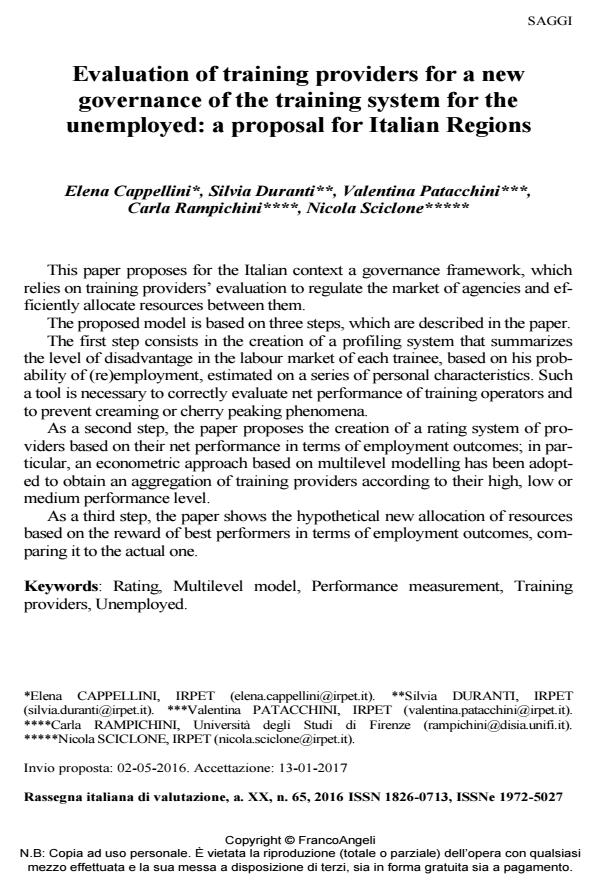Evaluation of training providers for a new governance of the training system for the unemployed: a proposal for Italian Regions
Journal title RIV Rassegna Italiana di Valutazione
Author/s Elena Cappellini, Silvia Duranti, Valentina Patacchini, Carla Rampichini, Nicola Sciclone
Publishing Year 2017 Issue 2016/65
Language English Pages 17 P. 27-43 File size 641 KB
DOI 10.3280/RIV2016-065003
DOI is like a bar code for intellectual property: to have more infomation
click here
Below, you can see the article first page
If you want to buy this article in PDF format, you can do it, following the instructions to buy download credits

FrancoAngeli is member of Publishers International Linking Association, Inc (PILA), a not-for-profit association which run the CrossRef service enabling links to and from online scholarly content.
Keywords: Rating, Multilevel model, Performance measurement, Training providers, Unemployed.
Elena Cappellini, Silvia Duranti, Valentina Patacchini, Carla Rampichini, Nicola Sciclone, Evaluation of training providers for a new governance of the training system for the unemployed: a proposal for Italian Regions in "RIV Rassegna Italiana di Valutazione" 65/2016, pp 27-43, DOI: 10.3280/RIV2016-065003